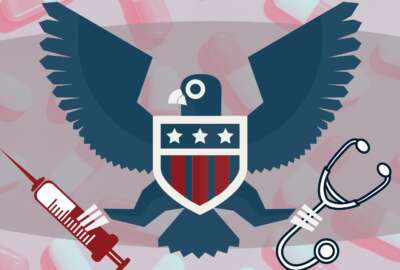USPS health care program will have 32 carrier options in 2025
Ahead of Open Season this fall, USPS employees and annuitants are getting a better idea of what options will be available to them in plan year 2025.
The Office of Personnel Management is ramping up preparations to transfer one-fifth of Federal Employees Health Benefits (FEHB) enrollees into a new system meant specifically for the Postal Service.
Starting in January 2025, about 1.9 million USPS employees, annuitants and their families are expected to be enrolled in a health plan within the upcoming Postal Service Health Benefits (PSHB) program.
Ahead of the new plan year, Postal employees and annuitants are getting a better idea of what options will be available to them. For 2025, Postal Service employees and annuitants will tentatively be able to select from 32 different carrier options.
OPM approved the couple dozen options this week — but their finalization is still contingent on upcoming negotiations of the specific benefits and rates each carrier will offer.
Similar to the FEHB options, offerings in the new PSHB will mostly be health maintenance organization (HMO) plans, with a couple fee-for-service plans mixed in as well. HMO plans use an existing network of medical providers and coordinate services for enrollees. Fee-for-service plans are more traditional — the carrier will either pay a medical provider directly, or reimburse an individual who has paid a provider and then filed an insurance claim.
Some PSHB plans will be specific to geographic areas, while others will be available to USPS employees and annuitants nationwide.
2025 PSHB carrier options
Information courtesy of the Office of Personnel Management. Chart created by Federal News Network.
The new health care program for USPS is a requirement stemming from the 2022 Postal Service Reform Act. The law mandated OPM to set up a health insurance program specifically for USPS with a tight timeline of launching in January 2025.
“I want to thank the carriers for their interest in supporting the health care needs of our federal workforce,” OPM Director Kiran Ahuja said in a statement. “This program improvement is only possible thanks to carrier participation and the tireless work of USPS and our OPM team.”
Postal employees and annuitants will have the opportunity to enroll in PSHB for the first time ever during the upcoming Open Season this November and December, OPM said. This year’s Open Season will offer both PSHB and FEHB enrollees the chance to adjust their health care options for the 2025 plan year.
In most cases, Postal employees and annuitants will be able to pick a health plan that’s comparable to their current plan in the FEHB. In cases where there isn’t an equivalent option available, OPM will automatically enroll individuals into the cheapest, no-fee, non-high-deductible plan that’s available in PSHB.
Ahead of implementation, certain Postal employees and annuitants will also be able to enroll in Medicare Part B during a special enrollment period between April 1 and September 1.
Additionally, for Postal annuitants, OPM will be requiring PSHB carriers to provide prescription drug coverage through Medicare Part D. Because of the upcoming requirement, it’s likely that most FEHB carriers will also offer Part D prescription drug coverage in 2025 as well.
Of course, launching such a large program comes with a price tag too. OPM initially received $70.5 million in appropriated funding to go toward the start-up costs for the PSHB program.
Now, for fiscal 2025, OPM is seeking another $24 million in funding for administering and maintaining the PSHB program over the next year.
“OPM is taking an enterprise approach to delivering this ambitious and modernized approach to providing health benefits under extremely tight deadlines,” OPM said in its 2025 congressional budget justification. “In addition to bringing together program offices across the agency, OPM is working collaboratively with USPS on communicating to employees about the changes and partnering with agencies across government to provide the necessary data integration to determine eligibility.”
OPM said solid funding for the agency’s inspector general office is also crucial to effective oversight of the new program — with the goal of ensuring it’s secure, effective and efficient. OPM is requesting $2.6 million for oversight of the PSHB program for 2025.
“The PSHB program risks annual losses of millions of taxpayer dollars due to fraud, waste or abuse as the program begins enrollment and disbursing benefits,” OPM said. “It faces similar risks as the FEHB program of health care fraud schemes and improper payments.”
A 2023 report from the Government Accountability Office showed that OPM spends up to $1 billion each year on ineligible enrollees in FEHB.
OPM said it is planning to use the PSHB’s launch as a litmus test for possible changes to the FEHB program moving forward. It’ll be especially important as the agency works on ways to better identify and remove ineligible members from the program.
This year’s Open Season will run from Nov. 11 to Dec. 9. During that time, both FEHB as well as new PSHB enrollees can view and make changes to their health care options for plan year 2025.
Copyright © 2024 Federal News Network. All rights reserved. This website is not intended for users located within the European Economic Area.
Drew Friedman is a workforce, pay and benefits reporter for Federal News Network.
Follow @dfriedmanWFED






